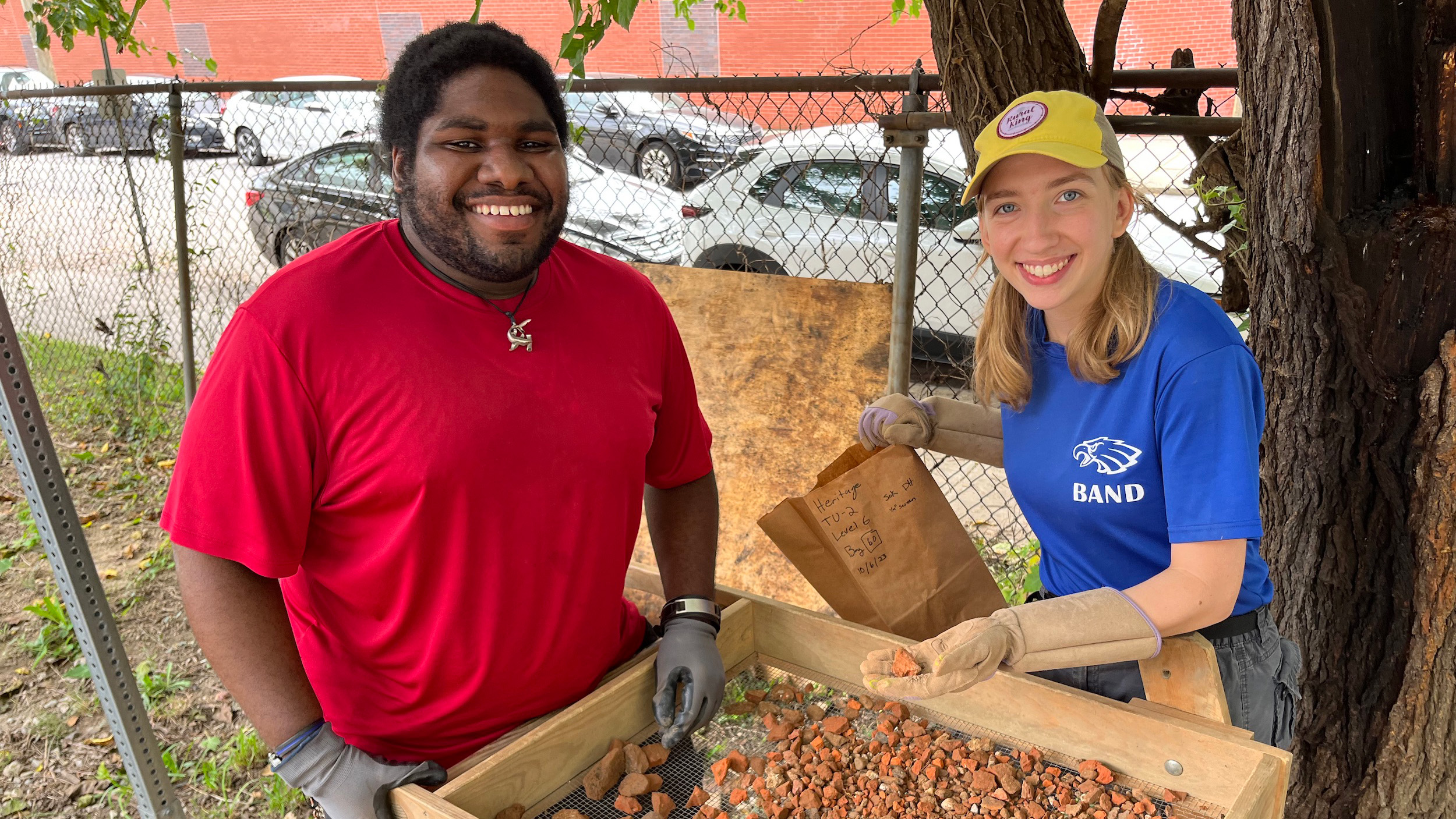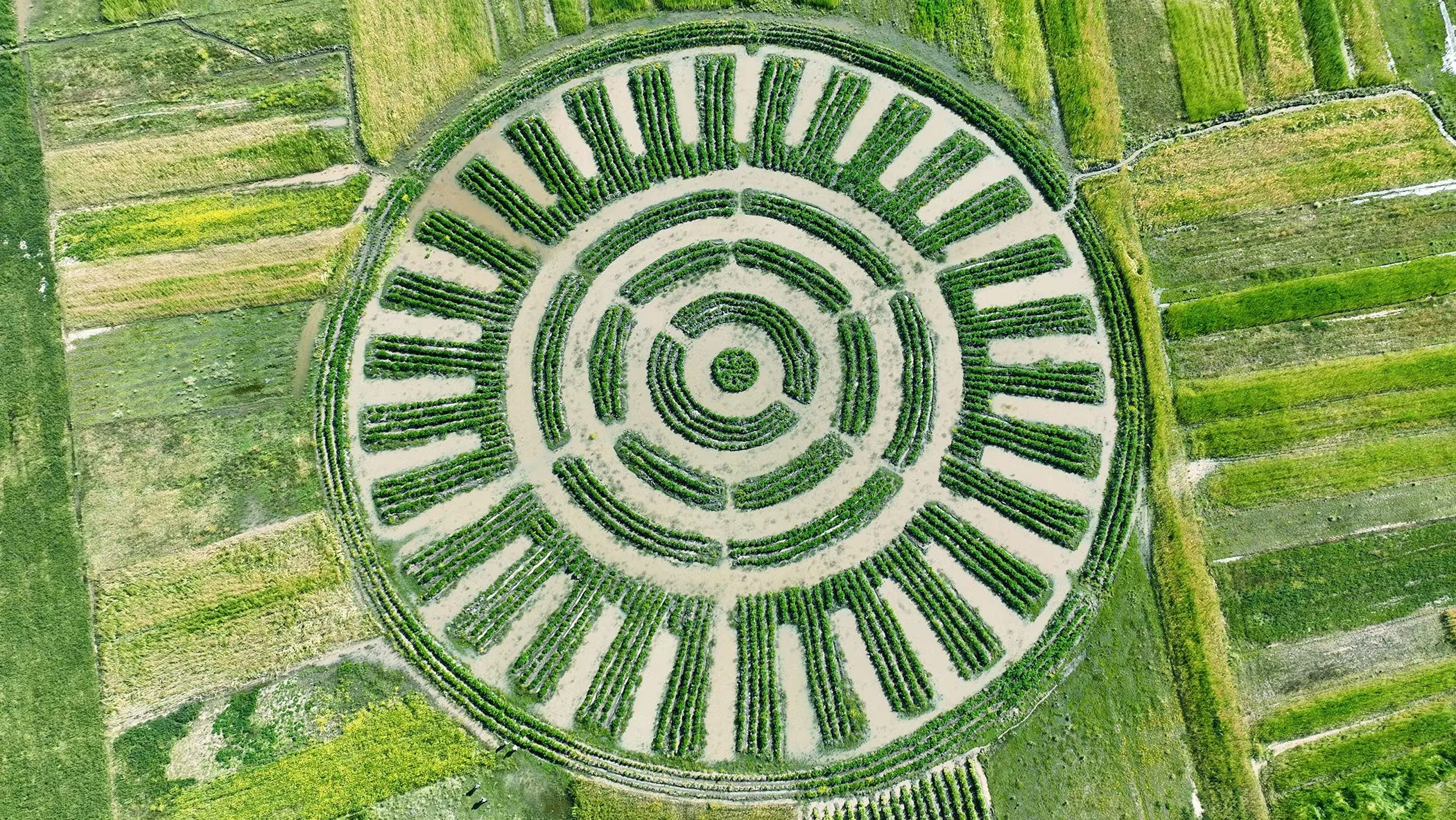In August of 1981, two enormous crates containing over 400 ethnographic objects from Thailand arrived at the Penn Museum. At the request of the Museum, the objects had been purchased by then grad student Joyce White while she was living in the village of Ban Chiang. From fish traps and baskets, to looms, pottery, textiles, silkworm trays, and a large ox cart, the pieces captured the traditional life of Lao villagers living in northeast Thailand.
The collection came with meticulous documentation including photographs and field cards which noted the day the piece was purchased, its local name, the village it came from, the function, how much it cost, and in many cases, the name of the person who it made it.
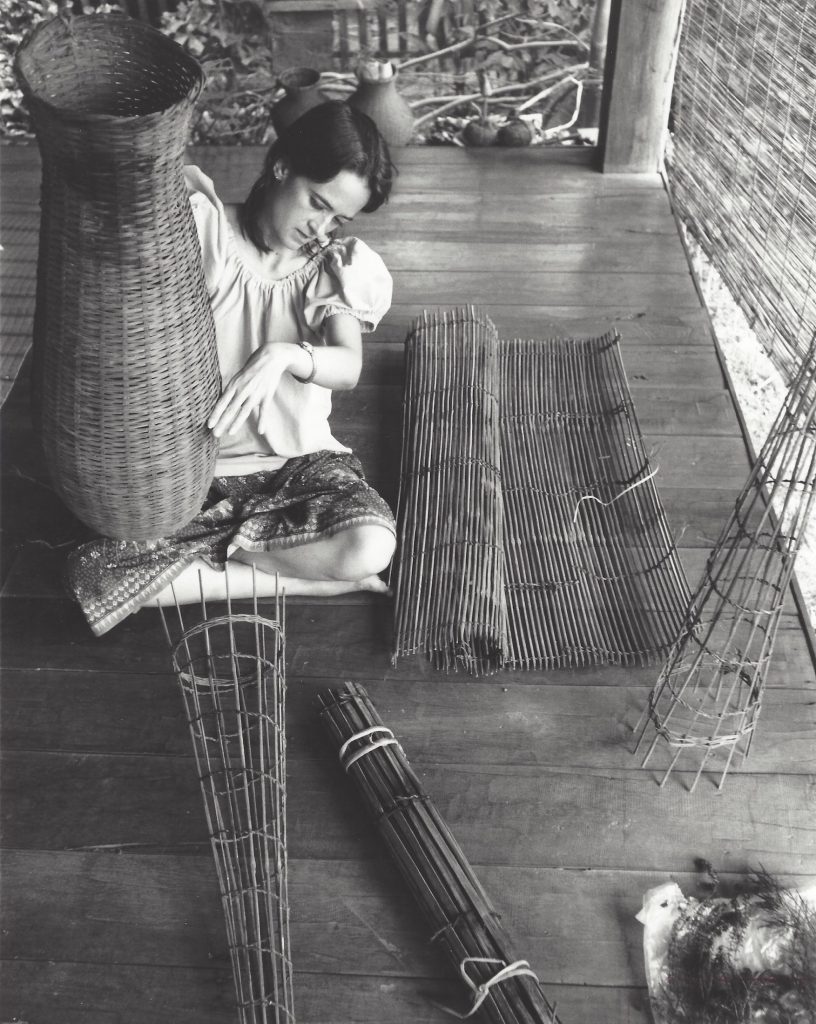
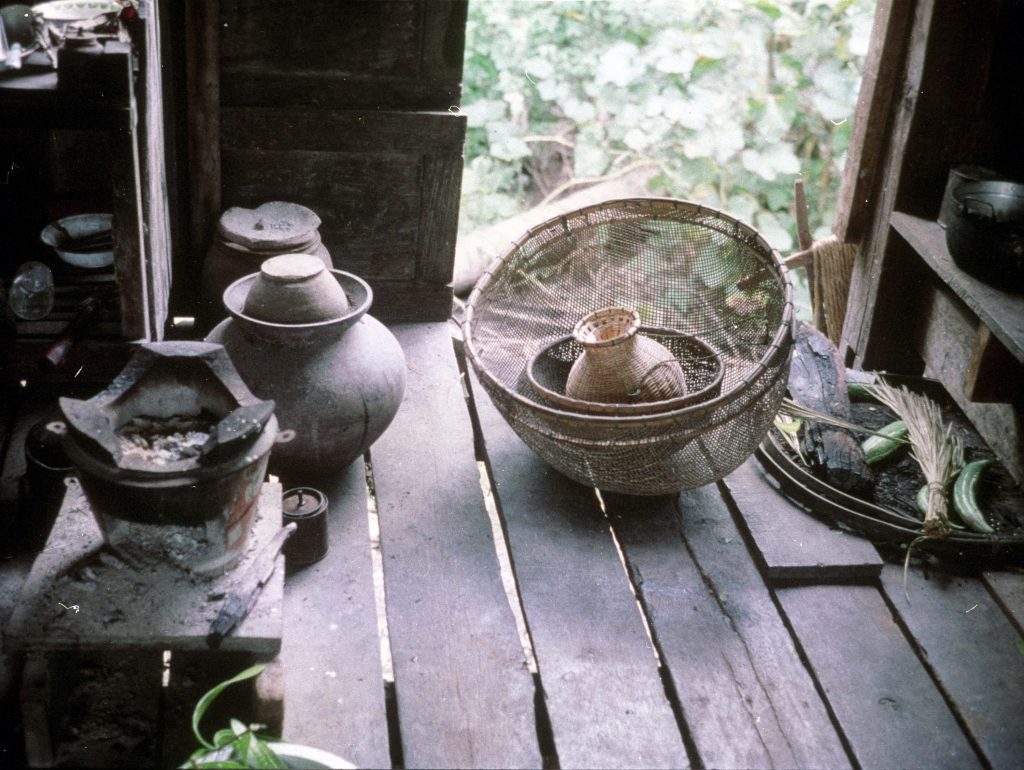
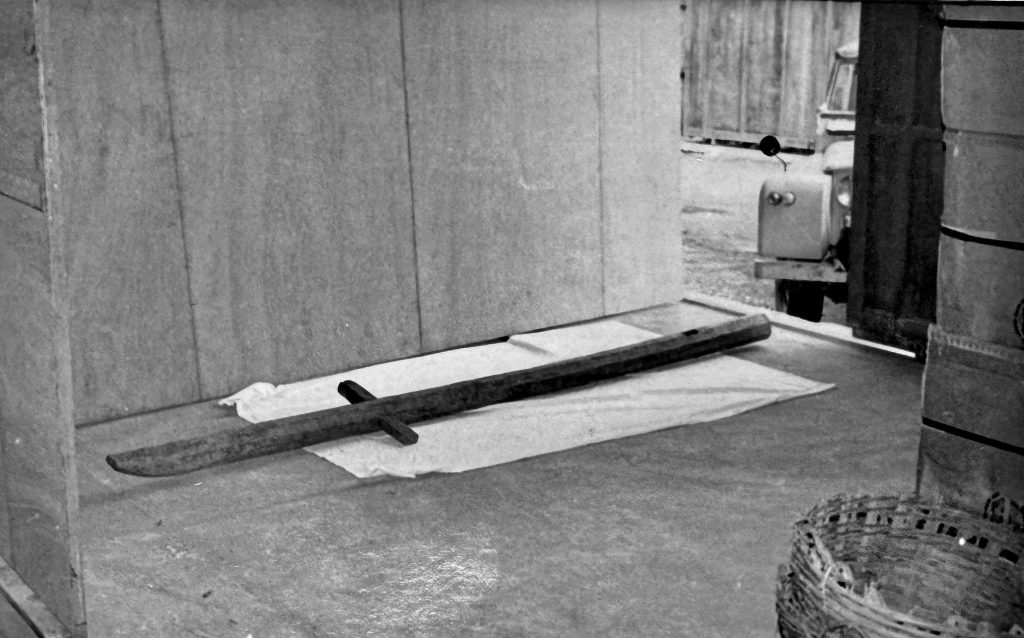
Over the next 12 years the collection passed through multiple hands as it was accessioned and processed into the Penn Museum’s collection by registrars, keepers, volunteers, and interns.
A lot has happened in the museum world since that initial cataloging effort. Digital photography, structured data, the internet, online databases, and geographic information systems have transformed the way museums document collections and make them accessible to a global audience.
As part of the Ban Chiang Project’s “Year of Botany” this past summer, a sub-project was created to utilize all of these new tools at our disposal in order to better document the data for each object and present the ethnographic collection as a whole online, making it available to the public and scholars alike.
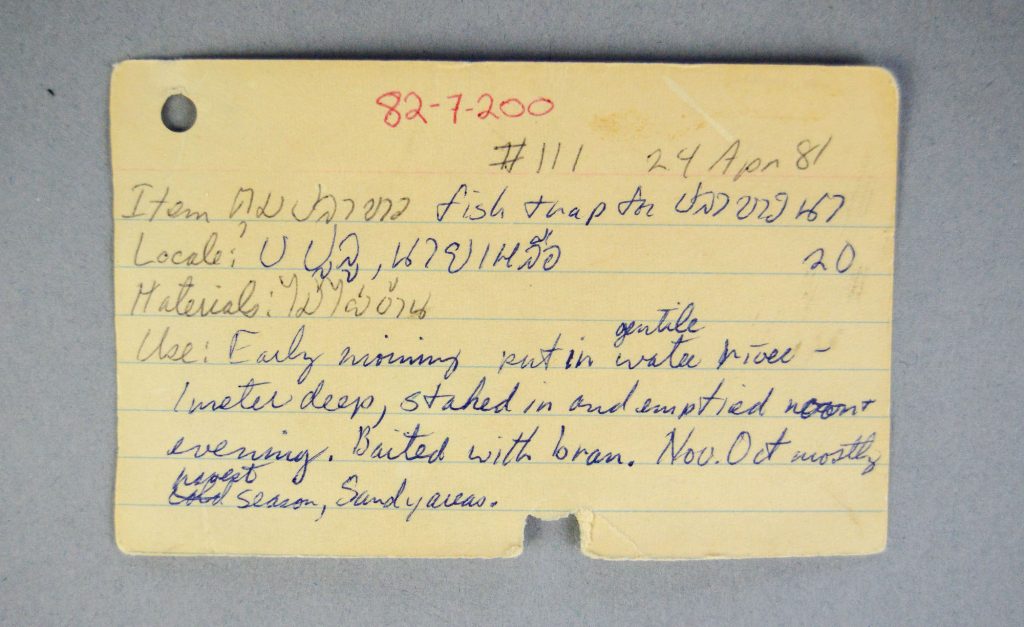
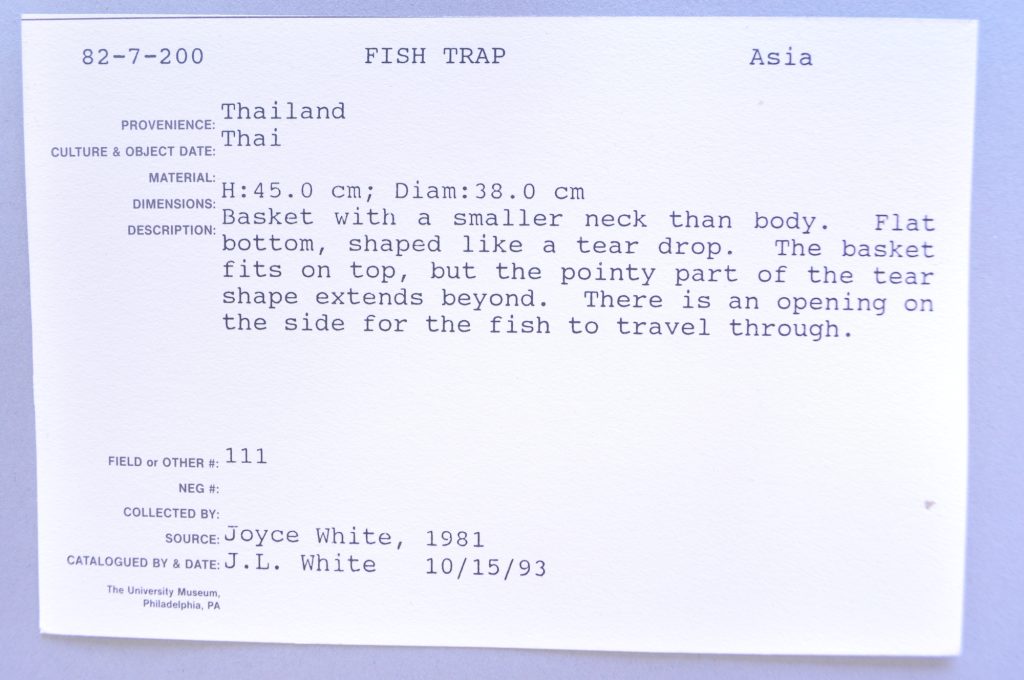
Coupled with this new technology was the rare ability to speak and work with the original collector, Dr. Joyce White, and to collaborate with a trained ethnographer from Thailand, Nichanan “Mew” Klangwichai, who could help read the original field notes in Thai and bring modern and up-to-date scholarship to the collection. Mew actually grew up about 30 miles from the village of Ban Chiang. This gave her unique insight into the collection as she had a community back home to draw on that knew a lot about the types of objects in the collection.
And so for three intense months, a team of Museum and Ban Chiang Project staff, visiting scholars, interns, and volunteers worked on the collection to improve the quality of the data and ensure that it was accurate and easily accessible.
The result of this project has been truly amazing. The amount of information added to the records has been substantial, including GIS mapped place name data, native names in Thai, fleshed out descriptions about function and use, plants identified as materials used to make objects, and subject categories to better navigate the types of objects in the collection. The presentation online also includes bibliographic references for similar pieces, diagrams for how some pieces fit together, measurements, and links to other digital resources.
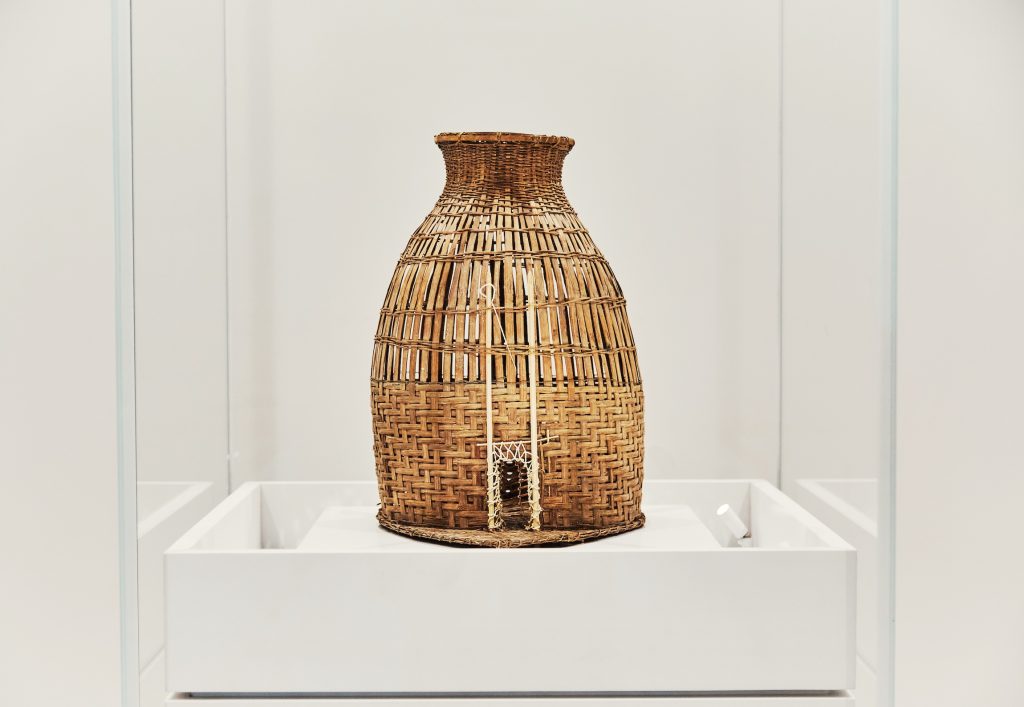
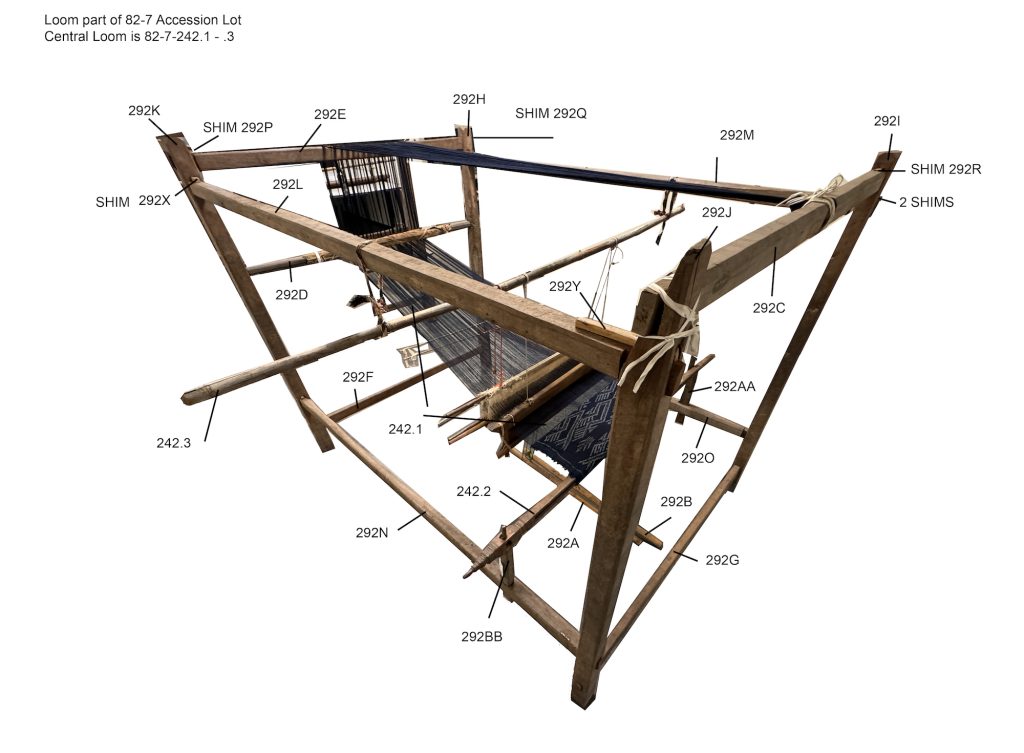
A highlight of the project was constructing two looms in a storage room to better understand how all the pieces fit together. Two members of the West Philadelphia Lao community visited the museum to help with the documentation.
The “Year of Botany” project has been particularly helpful in illustrating the relationship between archaeobotany, ethnobotany, and ethnographic studies. Understanding the plants that are indigenous to the area around Ban Chiang through archaeology helps identify the plant species in the region that would have been around for hundreds and probably thousands of years.
Local wisdom for understanding the properties of each plant makes it possible to best utilize those plants for particular functions. Thus we can understand the reasoning behind using one type of reed or wood for a particular trap or food processing device versus another.
As this type of knowledge has started to disappear with modernization, collections and collaborations like these ensure that the local knowledge of natural resources and traditional material culture in an area does not vanish completely. Articles are currently being written that speak to this effort and it is hoped that advertising the collection here will only increase the knowledge about these types of objects globally.
As we often said during the project, it truly takes a village. We look forward to hearing from others about what the collections mean to them and sharing those insights with the community.
This article is part of a series on the Penn Museum’s “Year of Botany.” You can read the other posts here.
Stephen Lang is the Lyons Keeper of Collections in the Asian Section at the Penn Museum.
We'd love to hear from you. Share your feedback about Penn Museum Voices Blog: info@pennmuseum.org
Explore More
